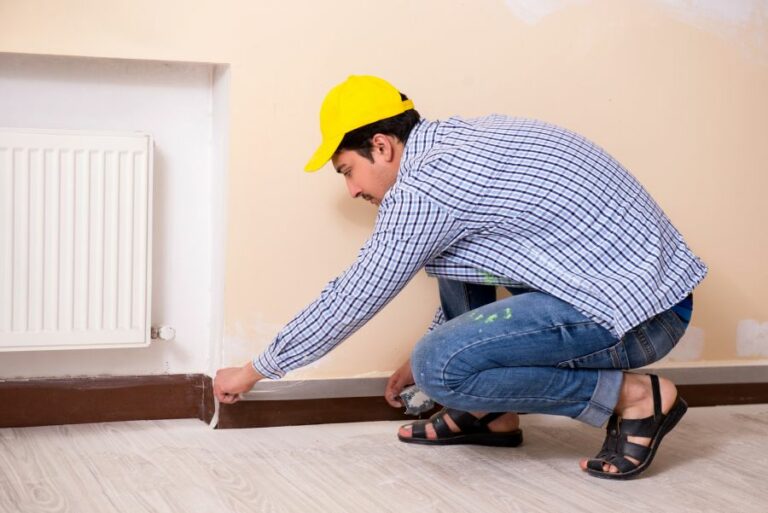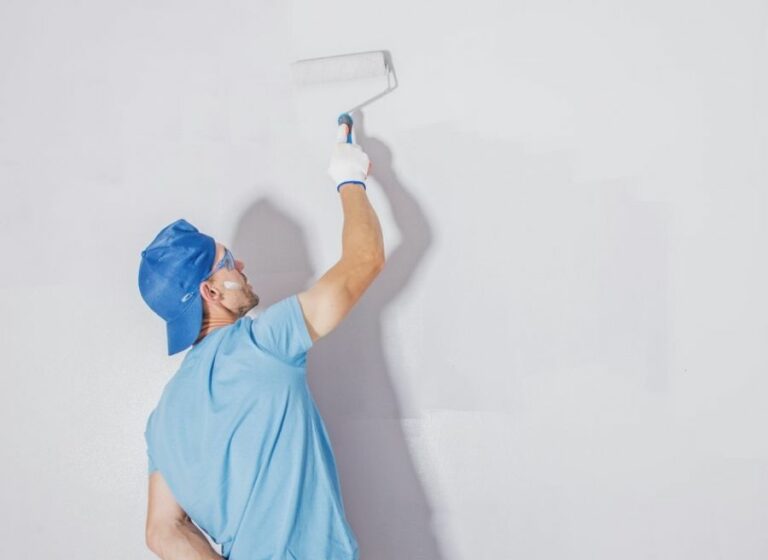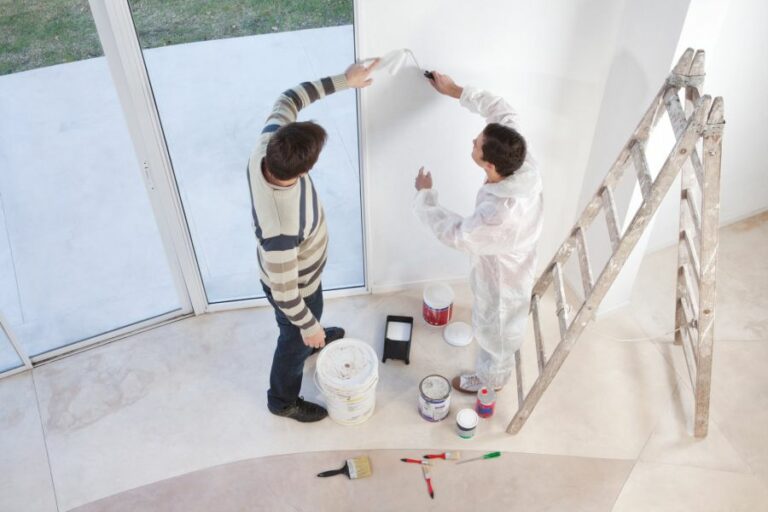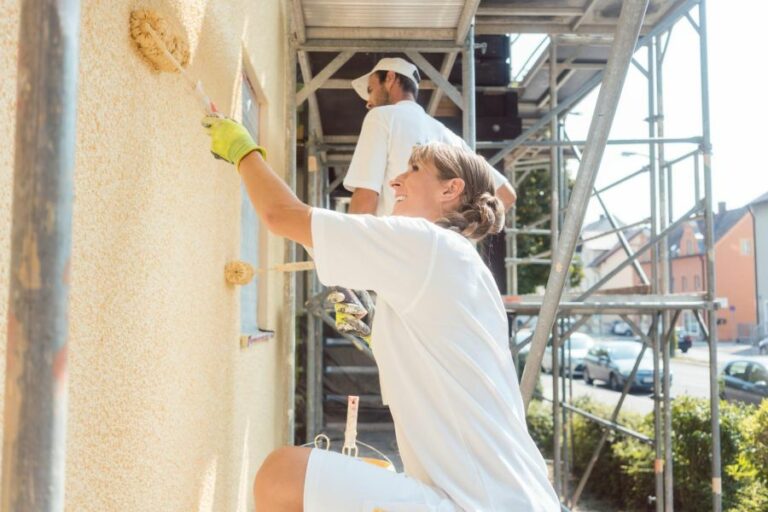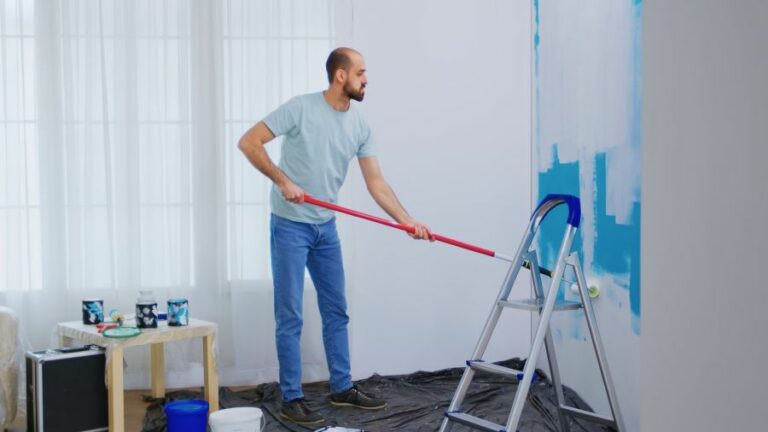Best Practices Surface Treatment For Old Buildings
The preservation and enhancement of the character of old buildings hold immense importance not only for architectural conservation but also for aesthetic and historical values. The surface treatment of these structures plays a crucial role in maintaining their integrity and longevity. As experts in this field, we understand the unique needs of these buildings and will be sharing the best practices for surface treatment to preserve their charm and ensure their lasting durability.
Best practices: surface treatment for old buildings:
Surface treatment is crucial for preserving and enhancing historic buildings, as it protects them from environmental factors and maintains structural integrity. Best practices include identifying building materials, thorough surface cleaning, repairing damaged portions, applying appropriate treatment techniques (e.g., water repellents, protective coatings, anti-graffiti treatments, biocidal treatments), and regular maintenance to ensure the longevity of treatments and overall building preservation.

Discover the secrets to preserving the beauty and integrity of old buildings through our expert guide on surface treatments. We’ll delve into traditional techniques, materials, and modern approaches, blending the perfect balance for a time-enduring finish. Read on to protect your architectural gem!
Contents
- 1 Top Tips: Surface Restoration Techniques for Historic Buildings
- 2 Key Protective Surface Treatments for Building Structures
- 3 Three Primary Types of Surface Treatment Methods
- 4 Common Techniques Utilized in the Surface Treatment Process
- 5 The 9-Step Guide to Comprehensive Surface Preparation
- 5.1 • Step 1: Assess the Surface Condition
- 5.2 • Step 2: Develop a Preparation Plan
- 5.3 • Step 3: Clean the Surface
- 5.4 • Step 4: Remove Existing Coatings
- 5.5 • Step 5: Repair Surface Imperfections
- 5.6 • Step 6: Sanding and Abrading
- 5.7 • Step 7: Final Cleaning
- 5.8 • Step 8: Priming the Surface
- 5.9 • Step 9: Inspect and Adjust
Top Tips: Surface Restoration Techniques for Historic Buildings
• Importance of Surface Treatment
Surface treatment is essential for the preservation and enhancement of old buildings. It not only improves the aesthetic appearance but also extends the life of the buildings by protecting them from various environmental factors like rain, wind, sunlight, and pollution.
Furthermore, it helps maintain the structural integrity of the building by preventing the ingress of moisture and salts, which can cause deterioration and damage to the building materials.
The National Park Service provides guidance on appropriate methods of surface treatments for preserving old buildings.
• Identifying the Building Material
Before starting with surface treatment, it’s essential to identify the type of building material. Different materials require specific treatment techniques and products. Some of the common materials used in old buildings include:
- Stone
- Brick
- Concrete
- Wood
- Plaster
- Metal
Each material has its characteristics and demands specific treatment methods. Additionally, the age and condition of the material should be taken into consideration while choosing the treatment method.
• Surface Cleaning
Before applying any surface treatment, it is crucial to clean the building surface thoroughly and remove dirt, debris, vegetation, and any other foreign materials. Cleaning methods must be chosen carefully to avoid damaging the building materials. Some of the widely-used cleaning techniques include:
– Dry Surface Cleaning
Dry surface cleaning techniques are suitable for removing light dust, dirt, and debris from building surfaces. Examples of dry cleaning methods are:
- Soft brushing
- Air pressure cleaning
- Vacuum cleaning
– Wet Surface Cleaning
Wet surface cleaning techniques involve the use of water or other liquids to clean the building surface. They are effective in removing dirt, stains, and other stubborn materials from the surface. Examples of wet cleaning methods are:
- Low-pressure water cleaning
- Steam cleaning
- Chemical cleaning using mild detergents or solutions
It is essential to use the correct cleaning technique for the specific material and condition of the building surface to prevent any damage.
• Repair and Restoration
After cleaning the surface, it is essential to repair any damaged or deteriorated portions of the building material. This may include:
- Filling cracks and holes
- Repointing joints
- Replacing damaged bricks, stones, or wooden members
- Strengthening weakened areas
The repair materials should match the original building materials in terms of composition, color, and texture. If needed, consult an experienced conservator or restoration professional for guidance.
• Surface Treatment Techniques
There are various surface treatment techniques available for old buildings, depending on the building material and specific requirements. Some of the common methods are:
– Water Repellents
Applying water repellents, such as silicones or silanes, can protect porous building materials like stone, brick, and concrete from moisture infiltration. However, it’s essential to choose the right water-repellent product that is compatible with the building material and allows it to maintain its breathability.
– Protective Coatings
Protective coatings, such as paints or sealants, can be applied on building surfaces to protect them from the damaging effects of sunlight, pollution, and moisture. It is crucial to select coatings that are compatible with the building materials and do not obstruct moisture movement.
For example, use lime-based paints for traditional buildings and avoid modern acrylic or vinyl paints.
– Anti-graffiti Treatments
Graffiti can cause damage to the building surface and undermine its aesthetic appeal. Anti-graffiti treatments, like sacrificial coatings or non-sacrificial coatings, can be applied to provide graffiti resistance to building surfaces.
– Biocidal Treatments
Biocidal treatments, like fungicides or algaecides, can be used for controlling microbial growth on building surfaces. The use of biocidal treatments should be done carefully, and it’s essential to ensure that they don’t have any adverse effects on the building materials or the environment.
• Regular Maintenance
Regular maintenance is vital to ensure the effectiveness and longevity of the surface treatments. Conduct periodic inspections to monitor the condition of the building surfaces and the performance of surface treatment measures.
Also, remember to keep the building clean and address any repair issues as soon as they arise.
• Final Thoughts
Surface treatment for old buildings is a crucial aspect of their preservation and enhancement. By following best practices and maintaining the building materials effectively, old buildings can be protected, and their cultural and historical significance can be preserved for future generations.
Method | Description | Advantages | Disadvantages |
|---|---|---|---|
Limewash | A traditional coating made from lime, water, and natural pigments. | – Highly breathable – Natural material – Protects surfaces | – Requires regular maintenance – Limited color range |
Silicate mineral paint | A paint made from silicate binder and mineral pigments. | – Highly breathable – Durable – Resistant to UV light and weathering | – More expensive than other paints – Requires skilled application |
Clay plaster | A coating made from clay, sand, and natural fibers. | – Environmentally friendly – Breathable – Low embodied energy | – Requires skilled application, may not be suitable for all surfaces |
Consolidation | A treatment to strengthen or restore the original material of the building. | – Preserves original materials – Maintains historic appearance | – Can be expensive – May not be effective in all cases |
Repointing | Repairing or replacing the mortar in masonry joints. | – Improves water resistance – Structural stability and appearance | – Requires skilled application to match original mortar and avoid damaging masonry |
Key Protective Surface Treatments for Building Structures
Structures, whether made from concrete, steel, or any other material, are exposed to various elements in their environment. These elements can include natural factors like moisture, chemicals, and UV radiation, or man-made factors like pollution and abrasion.
To protect structures from these damaging factors and to extend their service life, protective surface treatments are essential.
• Protective Surface Treatments for Concrete Structures
– Water Repellents
Water repellents, also known as hydrophobic treatments, are applied to the surface of concrete structures to protect them from water and chloride ion penetration.
These treatments work by creating a hydrophobic barrier on the surface, preventing water ingress. Examples of water repellents include silanes, siloxanes, and siliconates.
I recommend using water repellents for concrete structures exposed to high moisture conditions, like bridges and building facades.
– Anti-Carbonation Coatings
Carbonation is a process that occurs when carbon dioxide in the air reacts with moisture and alkaline materials in concrete, forming carbonates. Over time, this reaction reduces the alkalinity of concrete, leading to corrosion of the steel reinforcement.
Anti-carbonation coatings form a protective layer on the concrete surface, shielding it from carbon dioxide and preventing the carbonation process.
Anti-carbonation coatings are particularly useful for structures exposed to high levels of air pollution and carbon dioxide. These coatings also provide some protection against the ingress of water and chloride ions.
– Concrete Sealers
Concrete sealers are applied to the surface of concrete structures to protect them from various internal and external factors, such as freezing and thawing cycles, chemical attacks, and moisture ingress. Sealers can be classified into two main categories: film-forming and penetrating sealers.
Film-forming sealers create a thin layer on the surface of the concrete, while penetrating sealers penetrate the concrete’s pores, providing durable protection. Penetrating sealers, such as silicates, are recommended for their ability to protect against abrasion, weathering, and freeze-thaw cycles.
• Protective Surface Treatments for Steel Structures
– Galvanizing
Galvanizing is a process by which a protective layer of zinc is applied to the surface of steel through either hot-dip galvanizing or electro-galvanizing.
This zinc layer protects the steel from corrosion by acting as a barrier between the steel and the environment, as well as through cathodic protection, where zinc corrodes preferentially to the steel, thus protecting it.
Hot-dip galvanizing is recommended for structures exposed to humid or corrosive environments, such as highway infrastructure and marine facilities. American Galvanizers Association provides guidelines on the galvanizing process.
– Protective Paint Coatings
Protective paint coatings are used to protect steel structures from corrosion, UV radiation, and other environmental factors. These coatings can be classified into three main categories: barrier coatings, inhibitive coatings, and sacrificial coatings.
Barrier coatings form a physical barrier between the steel and its environment, preventing moisture and other corrosive agents from contacting the steel surface. Examples of barrier coatings include epoxy, polyurethane, and vinyl-based paints.
Inhibitive coatings act by chemically inhibiting the corrosion process, preventing or slowing down the corrosion rate. These coatings include alkyd, acrylic, and zinc phosphate-based paints.
Sacrificial coatings work through the principle of cathodic protection and include zinc-rich primers, which corrode preferentially to the steel, protecting it.
When selecting protective paint coatings, consider the specific environmental factors affecting the structure, such as humidity, temperature, and exposure to corrosive substances.
• Protective Surface Treatments for Other Materials
– Anodizing
Anodizing is a process used to protect aluminum and its alloys from corrosion and weathering. During anodization, an aluminum surface is transformed into a durable oxide layer, which is then sealed to further enhance its protective properties.
Besides corrosion protection, anodizing also provides an improved aesthetic appearance, making it ideal for decorative purposes.
Anodizing is recommended for aluminum structures exposed to harsh environments or structures where aesthetics are a priority, such as building exteriors and window frames.
– Powder Coating
Powder coating is a process where a dry powder material is applied to a surface and then cured under heat or UV radiation. The result is a protective layer that is more resistant to wear and damage compared to conventional liquid paint coatings.
Powder coating can be applied to a wide range of materials, including steel, aluminum, and plastic.
Powder coating is ideal for structures that require a highly durable and aesthetically pleasing finish, such as handrails, fencing, and architectural features.
In conclusion, protective surface treatments play a crucial role in extending the service life of structures and maintaining their integrity.
By understanding the different types of treatments available and their specific applications, one can make an informed decision about the best way to protect their structures from environmental and man-made factors.
Type | Description |
|---|---|
Paints and Coatings | Paints and coatings provide a barrier between the structure’s surface and the elements, helping to prevent corrosion and damage. |
Galvanizing | Galvanizing is the process of applying a protective zinc coating to steel or iron to prevent rust and corrosion. |
Anodizing | Anodizing is an electrochemical process that forms a protective oxide layer on aluminum surfaces, providing increased corrosion resistance and an attractive finish. |
Cathodic Protection | Cathodic protection is a technique used to control the corrosion of a metal surface by making it the cathode of an electrochemical cell, which helps prevent corrosion. |
Corrosion Inhibitors | Corrosion inhibitors are chemicals that can be added to a structure’s environment to slow down or prevent corrosion. |
Plastic Coatings | Plastic coatings, such as polyethylene, can be applied to a structure’s surface to provide a barrier against moisture, corrosion, and other damaging elements. |
Three Primary Types of Surface Treatment Methods
Surface treatment is the process of modifying a material’s surface properties, such as its resistance to wear, corrosion, and environmental factors, as well as aesthetics.
With a variety of methods and techniques available, surface treatment can be grouped into three main categories: mechanical, chemical, and physicochemical.
• Mechanical Surface Treatment
Mechanical surface treatment involves physically altering the surface of a material by removing, adding, or modifying its top layer. This category involves various techniques that can be broadly classified into two subcategories: abrasive and non-abrasive.
– Abrasive Techniques
Abrasive techniques utilize abrasive materials to remove or polish the surface’s top layer. Some common abrasive methods include:
- Grinding: A process where an abrasive wheel cuts or polishes the surface to achieve a desired finish. Grinding is often used for removing surface defects and improving surface roughness in metals.
- Honing: This technique involves the use of abrasive stones to refine the surface of cylindrical components, primarily in the automotive and aerospace industries.
- Lapping: A method of polishing a surface by rubbing it against a lap (a softer material) coated with an abrasive compound. Lapping is primarily used for achieving high-precision flatness and surface finish.
– Non-Abrasive Techniques
Non-abrasive techniques involve physically modifying the surface without the need for abrasive materials. Some popular non-abrasive methods include:
- Peening: A process in which small metal or ceramic particles are impacted onto the surface, causing plastic deformation. This results in residual compressive stresses that can improve fatigue life and resistance to stress corrosion cracking.
- Burnishing: A technique where a hard, smooth tool is pressed against the material’s surface, which results in compressive stresses and a polished surface.
- Rolling: A method of applying pressure with rollers to plastically deform the surface. This improves surface finish and work hardening, which increases wear and fatigue resistance.
• Chemical Surface Treatment
Chemical surface treatments involve the use of chemicals to modify a material’s surface properties. These treatments can be further divided into conversion coatings, plating methods, and etching techniques.
– Conversion Coatings
Conversion coatings involve the chemical reaction of the surface of a material to form a protective layer. Common conversion coatings include:
- Phosphate coatings: A process in which a phosphate layer is formed on the surface of metals, providing corrosion protection, wear resistance, and improved adhesion for paints and coatings.
- Anodizing: An electrochemical process in which a metal surface, such as aluminum, forms a durable oxide layer for enhanced corrosion resistance and aesthetics.
– Plating Methods
Plating methods deposit a thin layer of another material onto the surface using different techniques. Some popular plating methods include:
- Electroplating: A process that involves the deposition of a metal layer onto a conductive surface using an electric current. This can improve corrosion resistance, wear resistance, or aesthetics.
- Electroless plating: A chemical process that deposits a layer of metal onto a surface without the use of an electric current. Common applications include nickel-phosphorus coatings for corrosion and wear protection.
– Etching Techniques
Etching involves the controlled removal of surface material using chemicals or electrochemical processes. Some etching techniques include:
- Acid etching: A method in which a surface is submerged in an acidic solution that selectively removes material. Acid etching is used for cleaning and enhancing surface adhesion for coatings.
- Electrochemical etching: A process that combines electrical and chemical energy to selectively remove material from a surface. This technique is used for precision shaping, surface roughening, and marking of component identification.
• Physico-Chemical Surface Treatment
Physico-chemical surface treatments involve a combination of physical and chemical processes to modify a material’s surface properties. This category includes techniques such as vapor deposition, laser treatment, and plasma-assisted methods.
– Vapor Deposition
Vapor deposition involves depositing a thin layer of material onto a surface through vapor phase processes. Common vapor deposition techniques include:
- Physical vapor deposition (PVD): A method in which a material is vaporized and condensed onto a surface to form a thin film. PVD is commonly used to apply coatings for wear and corrosion resistance, as well as decorative finishes.
- Chemical vapor deposition (CVD): A process where a material is deposited onto a surface through a chemical reaction involving gas-phase precursors. CVD can be used to apply high-performance coatings like diamond-like carbon (DLC) for enhanced wear resistance.
– Laser Treatment
Laser treatment uses laser beams to modify a material’s surface through controlled heating or ablation. Some laser treatment applications include:
- Laser surface hardening: A process that involves heating a surface quickly with a laser, followed by rapid cooling. This results in a hardened layer that improves wear and fatigue resistance while maintaining the bulk material’s properties.
- Laser surface texturing: A technique where a laser beam is used to create controlled microstructures on a surface, enhancing properties like adhesion, wetting, and friction.
– Plasma-Assisted Methods
Plasma-assisted methods use ionized gas (plasma) to modify the surface properties of materials, either through reactive processes or by physical means, such as sputtering. Some common plasma-assisted techniques include:
- Plasma nitriding: A process that involves the diffusion of nitrogen into a metal surface to form a hard, wear-resistant nitride layer.
- Plasma-enhanced CVD (PECVD): A CVD process that uses plasma to drive chemical reactions at lower temperatures than traditional CVD methods, enabling the deposition of thin films on temperature-sensitive materials like plastics.
• Conclusion
Surface treatment is a crucial aspect of materials engineering, allowing for significant improvements in a material’s properties and performance. With mechanical, chemical, and physicochemical treatments available, selecting the appropriate method is vital to achieving optimal results.
You can learn more about these categories and their applications by visiting educational and research institutions like MIT’s Materials Science and Engineering Department. Explore these techniques further and discover how surface treatment can advance your projects, processes, and products.
| Types of Surface Treatment Methods |
|---|
| Mechanical Surface Treatment |
| Chemical Surface Treatment |
| Surface Coating |
Common Techniques Utilized in the Surface Treatment Process
Surface treatment processes are essential for improving the durability, performance, and appearance of various materials. These methods are widely used in industries such as automotive, aerospace, electronics, and construction.
• Electroplating
Electroplating is a process that coats a base material with a thin layer of metal, such as gold, silver, or chromium. The base material is submerged in a solution containing metal ions and subjected to an electric current.
This causes the metal ions to adhere to the surface, forming a protective and decorative layer. Electroplating is commonly used to improve corrosion resistance, wear resistance, and electrical conductivity.
If you require a highly durable and corrosion-resistant coating, I recommend opting for electroplating. Some industries that commonly use this surface treatment are automotive, aerospace, and electronics manufacturing.
• Anodizing
Anodizing is a technique primarily used to protect and enhance the appearance of aluminum surfaces. The process involves submerging the aluminum in an electrolytic solution and applying an electric current, resulting in the formation of a protective oxide layer on the surface.
Anodizing increases aluminum’s corrosion resistance and provides an excellent base for paint or other coatings.
Anodizing is an ideal surface treatment for applications requiring a high level of corrosion resistance, such as in the aerospace and automotive industries. In addition, its ability to enhance the appearance of aluminum surfaces makes it a popular choice for consumer electronics and decorative materials.
• Heat Treatment
Heat treatment is a process that modifies the physical and/or mechanical properties of metals and alloys by heating and cooling them in a controlled manner. The primary goal of heat treatment is to increase a material’s hardness, ductility, strength, toughness, or wear resistance.
Various heat treatment methods exist, including annealing, hardening, and quenching. The appropriate method depends on the material and desired properties.
Heat treatment is suitable for a range of applications, such as producing high-performance metal components for the aerospace, automotive, and construction industries. I recommend considering heat treatment if your project requires a significant modification of material properties.
• Shot Peening
Shot peening is a method that enhances the fatigue strength and stress corrosion resistance of metal components subjected to high-level loads, such as in aerospace, automotive, and heavy machinery applications.
The process involves bombarding the surface with tiny spherical particles called shots, creating compressive residual stresses and increased resistance to fatigue, cracking, and corrosion.
I recommend shot peening for applications where components will be subjected to cyclical loads and require increased fatigue life and resistance to stress corrosion cracking.
• Powder Coating
Powder coating is an environmentally-friendly method of applying a decorative and protective finish to a wide variety of materials, including metals, plastics, MDF, and glass.
The powder coating process involves spraying a fine powder of electrically charged particles onto the material being coated, then heating the coated material in an oven, causing the powder particles to melt and form a smooth, hard finish.
Powder coating offers several advantages over conventional liquid paints, including greater durability, environmental friendliness, and more efficient use of material.
I recommend powder coating for applications requiring a durable and attractive finish, such as in automotive, appliances, furniture, and architectural components manufacturing.
• Conclusion
Selecting the right surface treatment method is crucial for improving the performance, longevity, and appearance of materials used in various industries.
The methods discussed above are among the most widely used and can offer significant benefits depending on the application. Before making a decision, it is essential to consider factors such as the material type, required properties, cost, and potential environmental impact.
Consult with an expert in the field to determine the best process for your specific needs.
| Commonly Used Methods in Surface Treatment Process |
|---|
| 1. Electroplating |
| 2. Anodizing |
| 3. Chemical Conversion Coating |
| 4. Powder Coating |
| 5. Paint Coating |
| 6. Plasma Spraying |
| 7. Thermal Spraying (Including High-Velocity Oxygen Fuel (HVOF) Spraying and Arc Spraying) |
| 8. Physical Vapor Deposition (PVD) |
| 9. Chemical Vapor Deposition (CVD) |
| 10. Laser Surface Treatment (Including Laser Cladding and Laser Hardening) |
| 11. Shot Peening |
| 12. Surface Mechanical Attrition Treatment (SMAT) |
| 13. Ion Implantation |
| 14. Electron Beam Surface Treatment |
| 15. Ultrasonic Peening |
The 9-Step Guide to Comprehensive Surface Preparation
Proper surface preparation is crucial to the success of any painting or coating project. A well-prepared surface ensures better paint adhesion, enhances the longevity of the coating and improves the overall aesthetics of the final result.
• Step 1: Assess the Surface Condition
Begin by examining the surface to determine its condition. Look for cracks, holes, or other imperfections that may affect the final outcome. If dealing with an older surface that has a previous coating, check for signs of peeling, chalking, or rust.
Recommendation: If you suspect lead paint is present, consult with a professional for proper handling and disposal.
• Step 2: Develop a Preparation Plan
A well-thought-out plan can save valuable time and resources. Consider factors such as the type of surface material, existing coatings (if any), environmental conditions, and the desired finish. This information will help you identify the appropriate tools, equipment, and methods to employ.
Recommendation: Consult with a reputable coating manufacturer to select a specific product matching the over needs of your project.
• Step 3: Clean the Surface
Thorough cleaning is essential to remove dirt, dust, and contaminants that could prevent proper paint adhesion. Use a brush, broom, or vacuum to remove loose debris. For tougher dirt and stains, use soapy water and a stiff brush or a pressure washer.
Recommendation: Check the EPA guidelines for proper cleaning of surfaces, especially if dealing with hazardous materials like lead or asbestos.
• Step 4: Remove Existing Coatings
Old or damaged coatings must be removed to ensure proper adhesion of the new coat. Common methods include hand scraping, chemical strippers, or power tools like sanders and grinders. Choose the most suitable method based on the type and condition of the existing coating.
Recommendation: Always wear appropriate personal protective equipment (PPE) like gloves, goggles, and respirators when removing paint, as some coatings may contain harmful substances.
• Step 5: Repair Surface Imperfections
Fill cracks, holes, and other defects with an appropriate filler or patching compound. Apply the filler according to manufacturer instructions and allow it to dry completely. Once dry, use sandpaper to smooth the patched area, ensuring it is level with the surrounding surface.
Recommendation: Use a high-quality filler for better adhesion, durability, and a smoother finish.
• Step 6: Sanding and Abrading
Sanding is critical when dealing with uneven or rough surfaces, as it promotes better paint adhesion. Use sandpaper, abrasive pads, or power sanders to achieve a smooth and consistent surface.
Recommendation: Begin with coarse-grit sandpaper (such as 80 grit) to remove surface irregularities quickly, then switch to the finer grit (120-220 grit) for a smoother finish.
• Step 7: Final Cleaning
After sanding and repairing imperfections, clean the surface again using brushes, brooms, vacuums, or pressure washers. This step ensures the removal of dust and any remaining debris before painting.
Recommendation: Wipe the surface down with a tack cloth, a sticky fabric specially designed to pick up fine dust particles.
• Step 8: Priming the Surface
Priming seals porous surfaces evens out surface absorption, and promotes better paint adhesion. Select a primer that is compatible with the chosen paint and specific to the surface material.
Recommendation: Allow the primer to dry according to the manufacturer’s recommendations before proceeding to the final step.
• Step 9: Inspect and Adjust
Before applying the paint or coating, inspect the surface carefully. Look for any missed imperfections or areas requiring extra attention. Touch up any spots as necessary and repeat the previous steps until the surface is ready for painting.
Recommendation: Use a bright light to thoroughly inspect the surface, as it reveals imperfections more easily.
In conclusion, diligent surface preparation is vital to achieving professional and long-lasting results. By following these 9 steps, you can ensure a properly prepared surface, ultimately saving time and resources on future repairs or recoating.
Remember to always consult with professionals and follow safety guidelines when handling hazardous materials or undertaking unfamiliar tasks.
Step | Description |
|---|---|
1 | Inspection and evaluation of the surface |
2 | Removal of contaminants (e.g., grease, oil, or dirt) |
3 | Stripping of previous coatings or paint (if necessary) |
4 | Repairing surface defects (e.g., cracks, voids, or unevenness) |
5 | Surface cleaning using abrasives (e.g., sandblasting, grinding, or wire brushing) |
6 | Application of a primer or corrosion inhibitor (if required) |
7 | Surface profiling to enhance coating adhesion |
8 | Drying the surface to remove moisture |
9 | Final inspection to ensure the surface is properly prepared |

